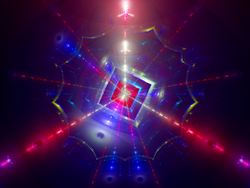Rare decays observed at LHC
The decay of the neutral Bs meson to two muons is forbidden at the elementary level. It is possible to still have this decay occur through higher-order transitions. However, the branching fraction for the Bs -> mu+ mu- decay is expected to be very small compared to other transitions. The first evidence for the Bs -> mu+ mu- decay was found in LHC beauty (LHCb) experiment data. Similar results were obtained with data collected by the Compact Muon Solenoid (CMS) detector. Neither of the individual results had sufficient precision to constitute the first definitive observation of the Bs decay to two muons. Two data sets were subsequently analysed simultaneously by a team of scientists, led by the Marie Curie project PENGUIN (Search for new physics in electroweak penguin transitions at LHCb). The aim was to exploit the statistical power of the two data sets combined and account for correlations between them. To explain the 'penguin' reference, in 1977, while Mary K. Gaillard, Mike Chanowitz and John Ellis were writing a paper on Grand Unified Theories predicting the b quark mass before it was found, they came up with the name penguins for Feynman diagrams. The reason – these famous diagrams, also related to the Bs -> mu+ mu- decay, look a lot like penguins. The CMS and LHCb collaborations performed a joint analysis of data from proton-proton collisions that were collected in 2011 and 2012 at a centre-of-mass energy of 7 and 8 teraelectronvolts. They obtained evidence for the Bs -> mu+ mu- decay with a statistical significance of three standard deviations. Scientists combined the two data sets by fitting a common value for each branching fraction to the data from both experiments. The branching fractions were determined from the observed numbers of Bs mesons that decay into two muons and the total numbers of Bs mesons produced. The simultaneous fit of both CMS and LHCb data took advantage of the larger data sample to increase the precision while properly accounting for correlations. This way, scientists conclusively established the existence of the Bs -> mu+ mu- decay and obtained the best measurements so far of the branching fractions. The exciting results have been published in the journal Nature.
Keywords
Rare decays, LHC, standard model, Bs meson, muons, LHCb, PENGUIN

